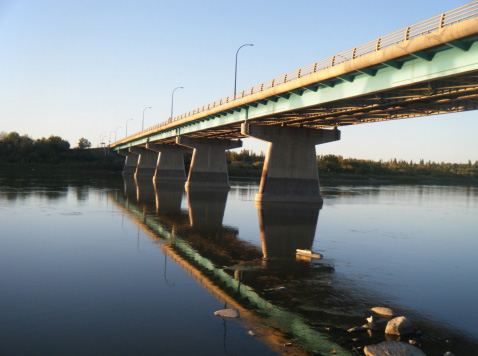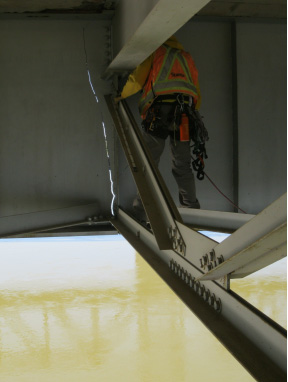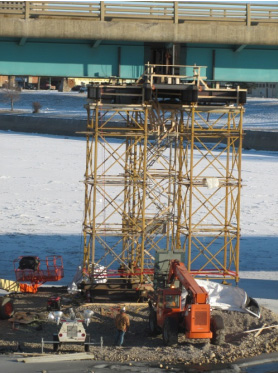Diefenbaker Bridge
Donated by the City of Prince Albert, Saskatchewan, Canada
Original Location: Over the North Saskatchewan River in Prince Albert, Saskatchewan, Canada
Opened: 1960
Emergency Repairs in 2011
Structure Type: Welded Plate Girder (Two-Girder Design)
Total Length: 1,000 feet
# of spans: 7
The Diefenbaker Bridge crosses over the North Saskatchewan River in Prince Albert, Saskatchewan, Canada. The bridge consists of two structures: one northbound and one southbound. Each structure is a two-plate girder steel bridge. The total length of the bridge is 1,000 feet and is continuous over seven spans. The bridge originally opened in 1960.
In 2011, a passing canoeist noticed a major crack in the southbound structure. The police closed the southbound bridge to the public, and an engineering firm was called to do emergency inspections. After the emergency inspections, it was decided that emergency repairs needed to be made. The major crack was found in the exterior girder of span 4. The crack was near mid-span and ran from the bottom flange to near the top of the web. The crack started at a connection between the web, horizontal cross-bracing, vertical stiffener, and horizontal gusset plate.
For the emergency inspections, climbing inspection was performed by teams over three days. About 90 connections similar to the one mentioned earlier were visually inspected and non-destructively examined in detail. Another 300 connections, dissimilar to the cracked one, were also inspected and tested in the top third of the girders. Structural analysis of the bridge was performed, and several samples of the girder web and bottom flange were taken for additional testing.
Analysis, testing, and inspection showed that the fractures were caused by a phenomenon in bridges called constraint induced fracture (CIF). Constraint induced fracture occurs at gusset plate connections where loads applied by several members, stiffeners, and gusset plates result in high triaxial tension. Thus, preventing ductile behavior of the connection and triggering flaw growth leading to fracture.
In order to repair the structure, three large towers were erected underneath the structure: one tower on each side of the fractured girder and a third tower under the non-fractured girder. Next, all of the floor beams and cross-bracing were supported. Finally, the old section of the fractured girder was removed and replaced with a new section.

Figure 1. Diefenbaker Bridge, Prince Albert, Saskatchewan

Figure 2. View showing floor system on the two-girder design.

Figure 3. Crack location at connection.

Figure 4. Girder section cut out.
